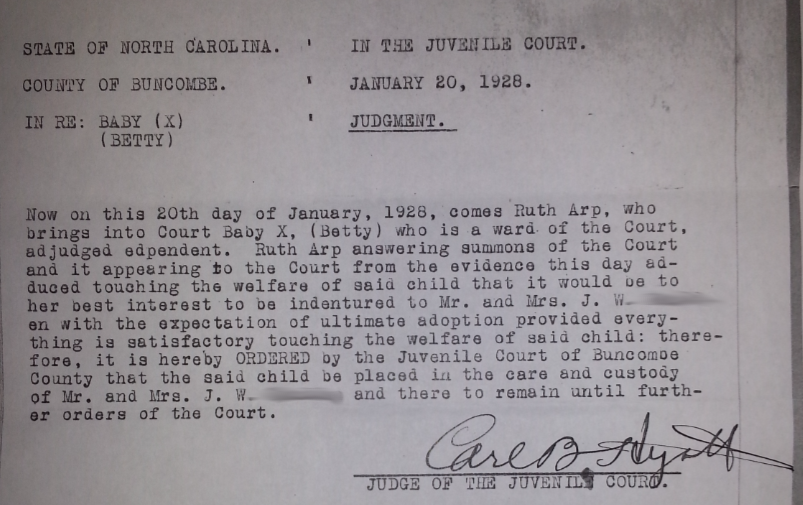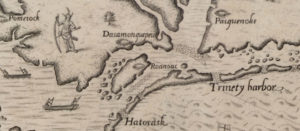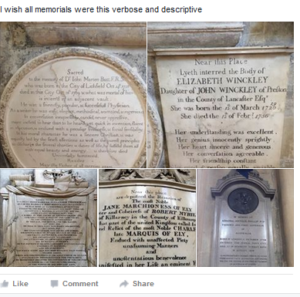Betty Jean had her DNA tested with 23andMe in an attempt to find out if she had any medical issues which she may have passed along to her children. Along with her health test, she was also was in 23andMe’s Genetic pool of genes. Having her genes in DNA gene Pools will help us in her adoption search.
23andMe
On first look, Betty Jean’s information included some fairly close cousin’s. The closest was a predicted 2nd cousin sharing 1.76% of their DNA. There were 12, 2nd to fourth cousin matches. I sent notes to all of them via 23andMe’s internal messaging system.
I also took some time to look to see if there were any common surnames in these matches. There were – Brotherton and Howard. At the time 23andMe had no DNA analytical tools, so I immediately downloaded Betty Jean’s raw DNA Data file (to download a DNA Data File from 23andMe see this help information) and uploaded it to GEDmatch (you must register for GEDmatch to be able to upload) via the Generic Upload Fast New, Beta.
NOTE: 23andMe has recently added DNA analysis tools which lets it’s users do chromosome mapping and comparisons to other matches. This is great news for anyone who has their DNA tested with 23andMe. It does not preclude a tester from uploading data to GEDmatch, because a tester would want to have their DNA in GEDmatch’s large Gene pool along with people (anyone who uploaded their raw data to GEDmatch) from all the testing companies.
Betty Jean’s GEDmatch Matches
After uploading Betty Jean’s Raw data file from 23andMe we found Betty Jean’s genes swimming in the pool with many of her close cousins – the big one was a 1st cousin once removed at 342.8 total cM.

What do we know from this list? Not much for this search since we don’t have any family line we can identify in the matches at face value, without being able to correlate the information with her matches family trees. GEDmatch does have a GEDCOM upload function, but not many of Betty Jean’s matches had their family trees on GEDmatch.
Gathering Family Trees
Again, using the emails for the matches on GEDMatch I sent emails explaining that Betty Jean Matched them and asking if they have family tree’s online or available for access in some other way. I also contacted Jane to discuss the matches. Jane and I spent a bit of time exchanging emails and connecting the dots of Betty Jean’s matches to Jane’s tree.
Remember the 20 foot tree I printed of Jane’s Ancestry Tree? At first I started trying to jump around that monster to mark where the matches landed in the tree. It was cumbersome and frustrating and I had to come up with a better way to be able to see ALL of it at once, and…
There was one more thing about Jane’s tree that needed some space to work-out. It seemed from a quick scan that the Howard and Brotherton lines, as well as other lines that married into them, were a product of Endogamy.

Endogamy is not uncommon in the US colonies as our social spheres were limited by small communities and vast distance between them. This occurred in Appalachia to an extent that one often hears jokes about “my cousin is my wife”. Jokes aside, the area of North Carolina where the Howard’s and Brotherton’s lived is on the outside edge of Appalachia.
Why should Endogamy be something we need to look into carefully and closely? Simply put, it skews the numbers. If cousins marry, then the DNA mix is a mix from one family rather than two. So there is a double infusion of Genes.
My Map of Betty Jean’s Family
It started with one single 8 1/2 x 11 sheet of paper. In the middle of that first sheet of the paper I wrote a list of Betty Jean’s top matches, the 12 Jane had in her tree and a few more. Then I started adding lines back. Creating pedigree charts from the DNA matches for each of the family lines identified by the DNA and Jane’s tree. As I went I added more blank sheets to fill in as I added family. At this point the Howard’s and Brotherton’s were extending to the right, radially from the DNA matches circle in the middle. I added papers to the map so that it was 3 sheets long and 3 sheets wide. Thankfully Jane’s tree was now easy to see, even with all the complicated connections within the Howard and Brotherton families.
For each person added to my map, I added or connected them to WikiTree to create Betty Jeans birth/mirror tree. It was a great help having WikiTree’s relationship tools at the ready to help me define how these people might be connected to Betty Jean. It also helped me when trying to decipher Jane’s voluminous emails on family connections.





